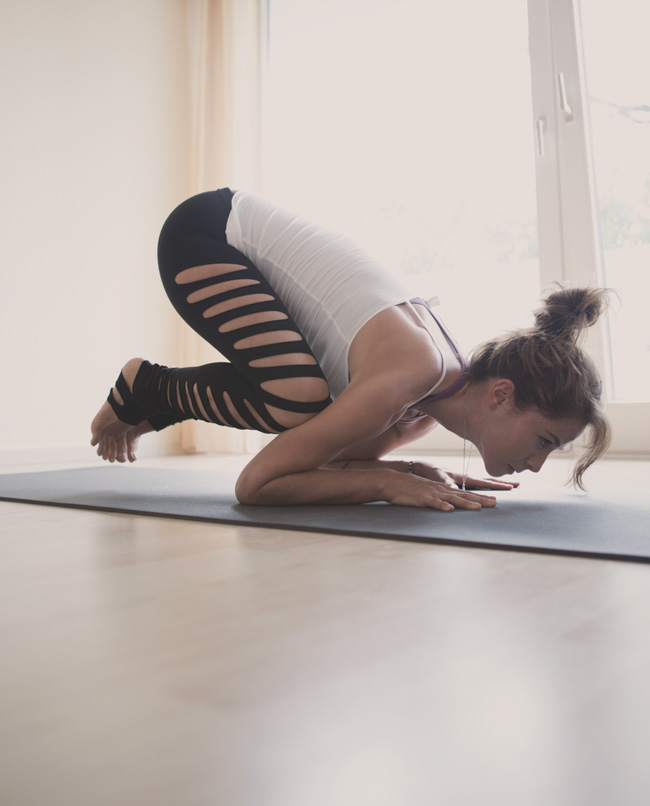When I'm teaching, particularly during balancing postures, I often see people rushing to get into poses and then getting frustrated when they can't maintain their balance and wind up falling over. There are two ways to fix this, and they're both relatively simple solutions.
Calm Your Mind
Yoga aims to unify the mind and body. In order for the balance to be there in a pose, the mind needs to quiet down. If the mind is distracted by what happened before class, or all the things that need to get done after class, it's not able to focus on what's happening in the moment.
In order to calm the mind down, find a place to look in front of you that isn't moving. Gaze at that place (called a drishti), breathe fully, and let all thoughts go.
Build the yoga pose from the foundation up
After the drishti is found, begin building the pose from the foundation up. Move slowly and mindfully - there is no rush.
Balance better in standing yoga poses
If it's a standing pose, being with the feet. Spread the toes to give a wider, stronger foundation. If you can't spread your toes, reach down and manually push them apart. The small muscles in the feet are used to being confined in socks and shoes all day - they're not used to stretching and working, so don't worry if the toes can't spread on their own. After the toes are spread, check out where the weight distribution is in the feet. Some people tend to put most of their weight in the heels, or in the balls of the feet. Aim for an even weight distribution. Then consider what's happening with the arch. This will be an extremely subtle movement, but intend to feel a lift in the arch of the foot. From there, work your way up the body, activating the muscles as you scan your body.
Balance better in arm balance poses
If it's an arm balance like baby bakasana shown above, the foundation will obviously be different, but the process of evaluation is the same. Instead of spreading the toes, evenly spread the fingers. Aim for equal weight distribution. Instead of feeling the arch lift, feel the palm slightly lift. Then proceed up the body, activating the forearms, the biceps, etc.
While it's the easiest way to see the importance of foundation in yoga poses, building from the foundation up doesn't just apply to balancing poses. A good foundation is vital in all yoga poses.
Foundation in seated yoga poses
In seated postures, the best way to improve foundation is to really connect the ground with the ischial tuberosity (aka sitz bones). To do this, push away the flesh covering the bones, and then tilt the pelvis forward. Bring the toes back toward the face. These movements bring the body into proper alignment and extend the hamstrings.
Foundation for supine yoga postures
For supine positions, the most important thing in the foundation is to be sure the lower back is protected. To do this, tilt the pelvis back so the lower spine is connected to the yoga mat. From there, scan the body for equal weight distribution.
Remember, ultimately yoga is a practice. There is always room for growth, and nothing is really ever truly mastered, so be patient and kind to yourself. Stay disciplined, and practice often, and the postures will come to you in time.
PS- A yoga video for balance.



